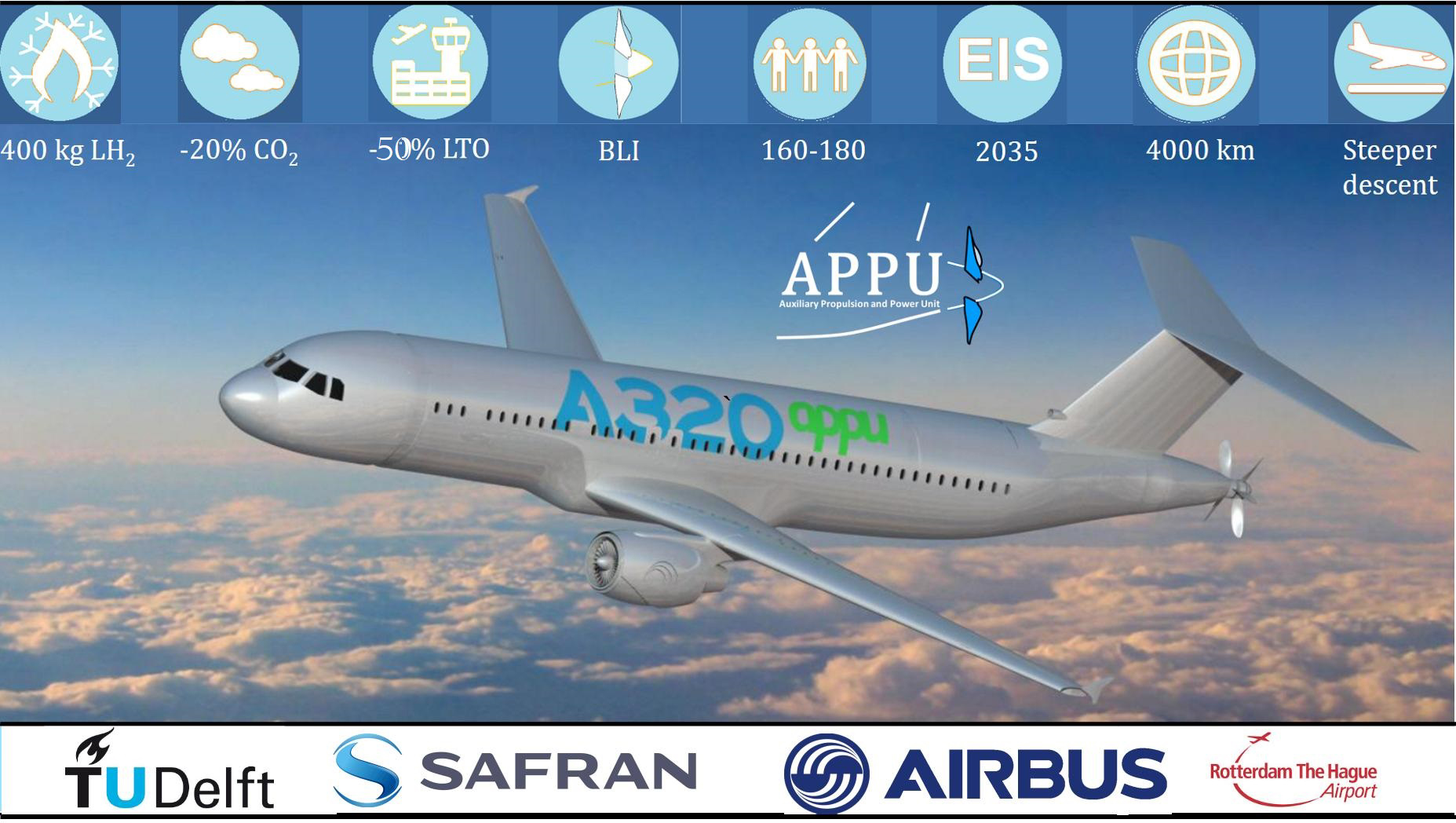An energy mix combined with a novel engine concept to make aviation much more sustainable
Researchers at TU Delft – together with partners SAFRAN group, Airbus and Rotterdam the Hague Innovation Airport (RHIA) – will work on an Advanced Propulsion and Power Unit (APPU) to be applied on aircraft of the calibre Airbus A320. The APPU technology, that makes aircraft engines more energy efficient and allows them to fly on an energy mix, including hydrogen, is expected to reduce the aircraft’s CO2 emissions by 20% and the emissions of air pollutants during take-off and landing by half. In this way the APPU technology will help make aviation more sustainable in the short term.
The climate impact of aviation has to be tackled soon
The EU Flight Path 2050 goals aim at dramatically reducing the climate impact of aviation. Drastic changes are necessary but will take a long time to develop. The APPU project can tackle part of the climate impact of aviation in a much shorter term. Coordinated by Dr. Gangoli Rao and Prof. Leo Veldhuis from the section Flight Performance and Propulsion at TU Delft, the APPU project is the first major undertaking to introduce an energy mix in aviation. Dr. Gangoli Rao: “The APPU project aims at significantly cutting both local emissions and the global impact of aviation by allowing aircraft to fly on a mix of energy carriers, including hydrogen, and by enhancing the energy efficiency of aircraft engines through innovative boundary layer ingestion (BLI) technology. This is a promising technology to increase aircraft efficiency.”
The workhorse of aviation
The APPU project team will develop this technology specifically for the ‘workhorse’ of aviation, the Airbus A320. Prof. Leo Veldhuis: “Aircraft that are used for short to medium distances, such as the A320, are responsible for almost half of the emissions from civil aviation. While small aircraft can be made electric or hybrid-electric, these solutions are not scalable and are not applicable to aircraft like the A320 family.” Preliminary studies indicate that the combination of BLI technology and hydrogen combustion, can reduce the CO2 emission for a typical 2000km flight by around 20% and the local emissions of air pollutants during take-off and landing (LTO emissions) by around 50%. Work that will be conducted in the first phase of the project running over the coming three years includes the design of an open rotor propulsion system operating with boundary layer ingestion technology, a hydrogen combustor for the APPU engine, and technological solutions for hydrogen storage inside aircraft. Veldhuis: “With this project we’re applying the energy transition to aviation. The energy transition is one of the best ways to fight climate change.”
